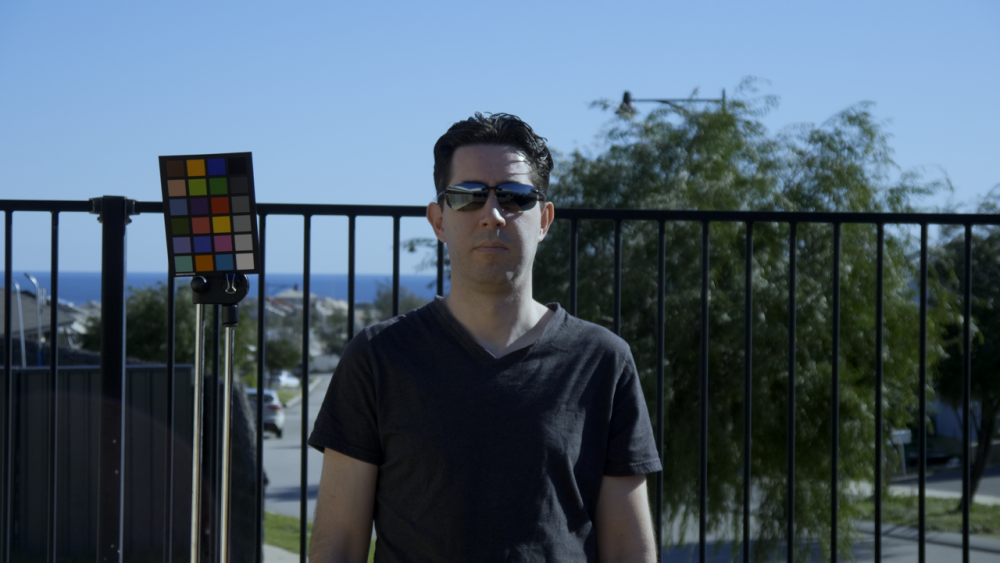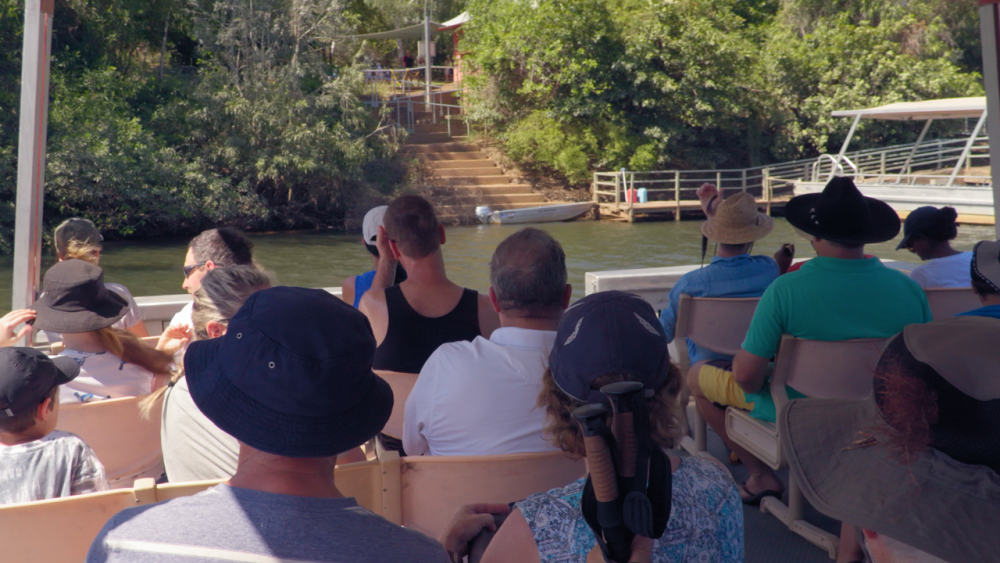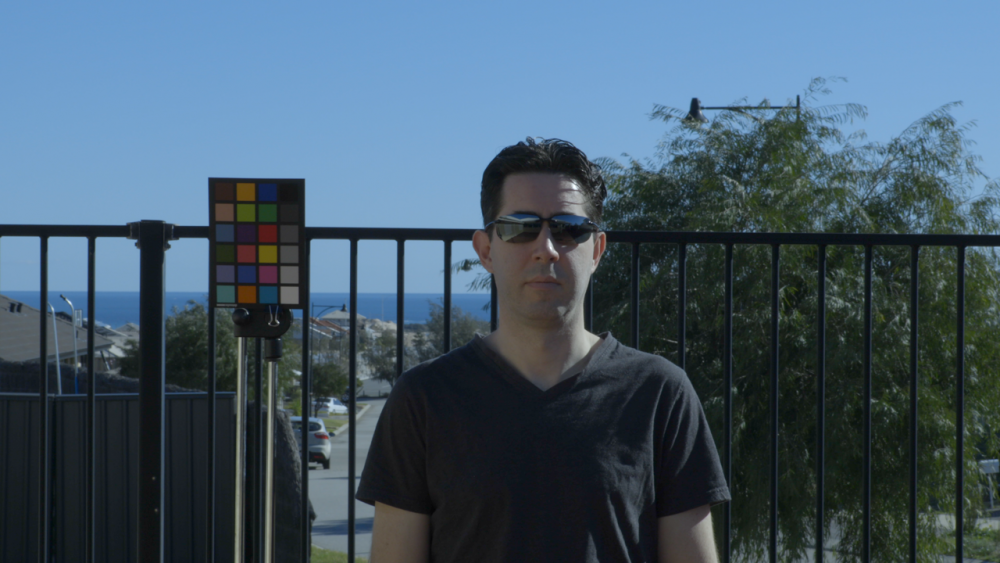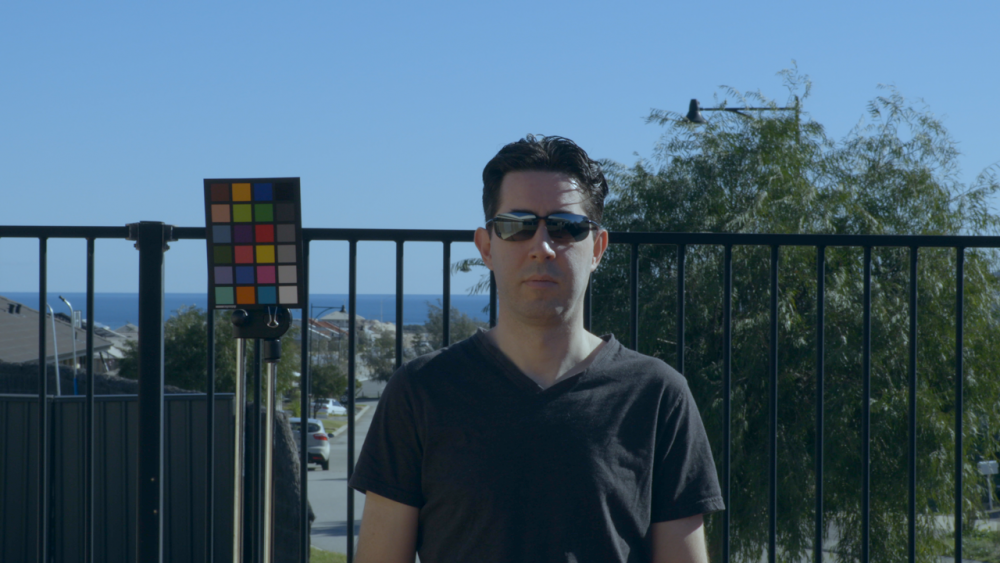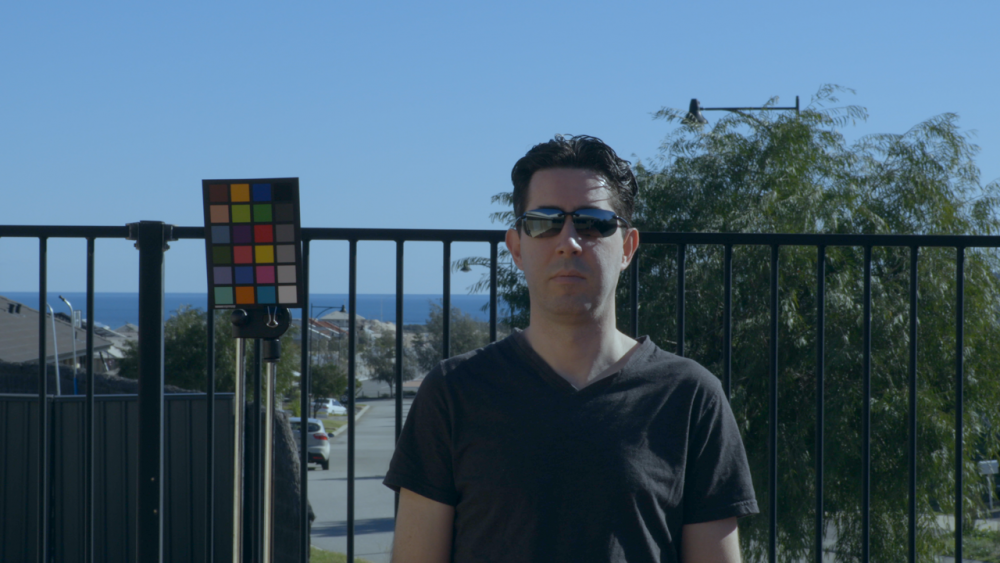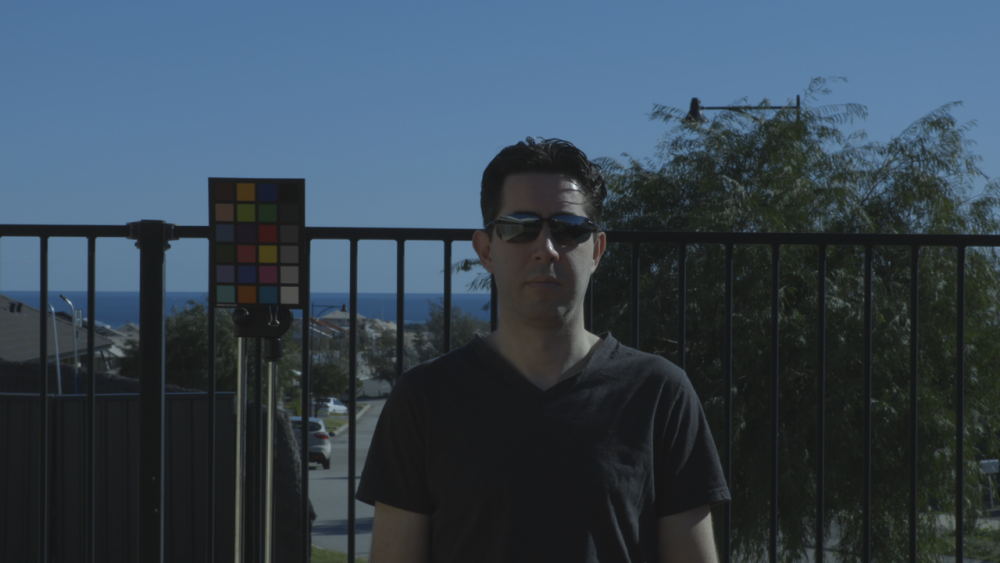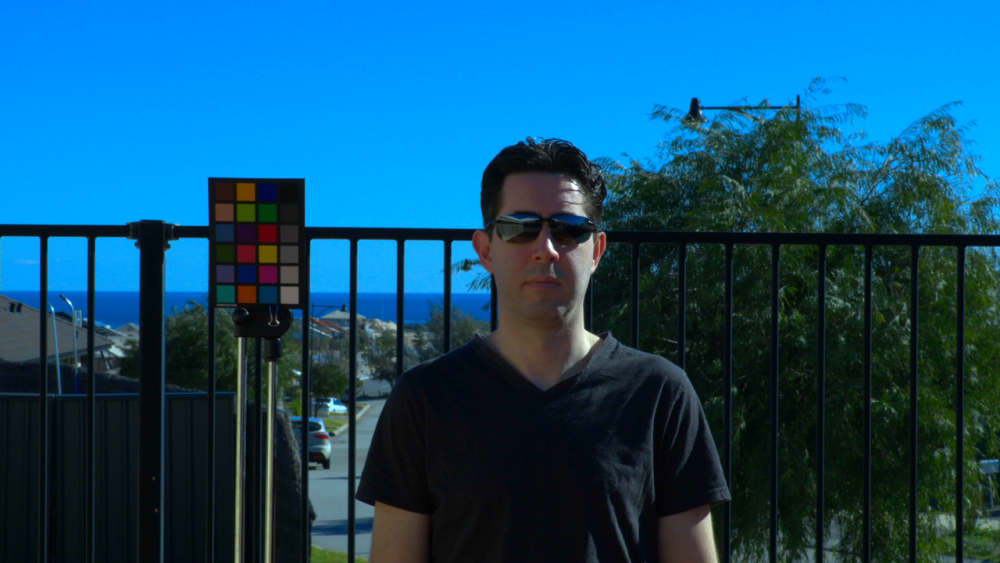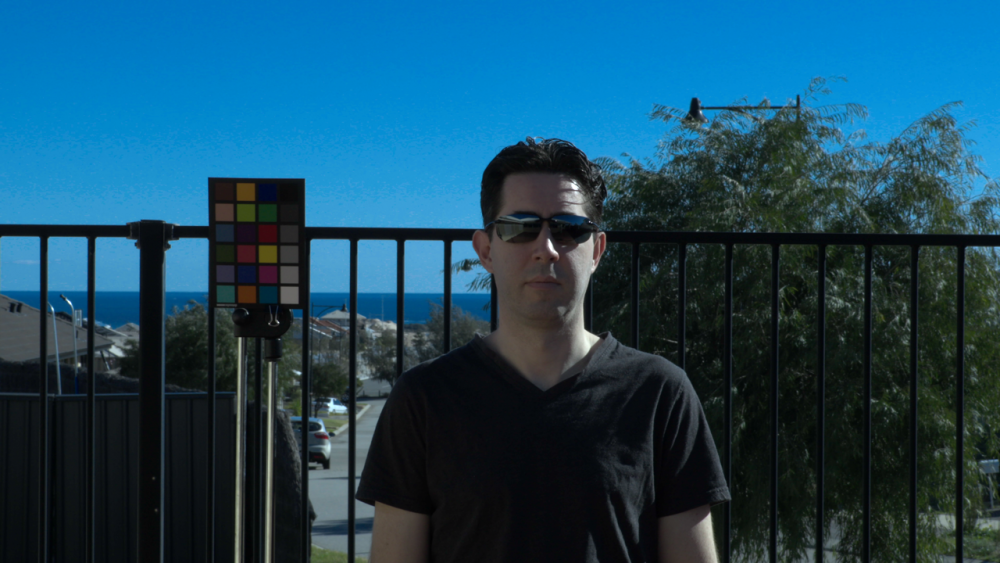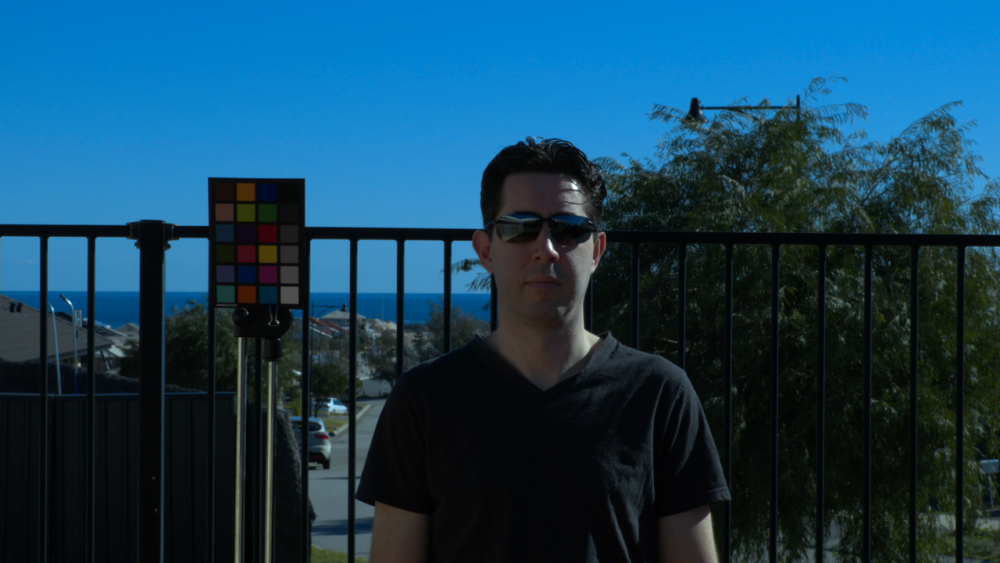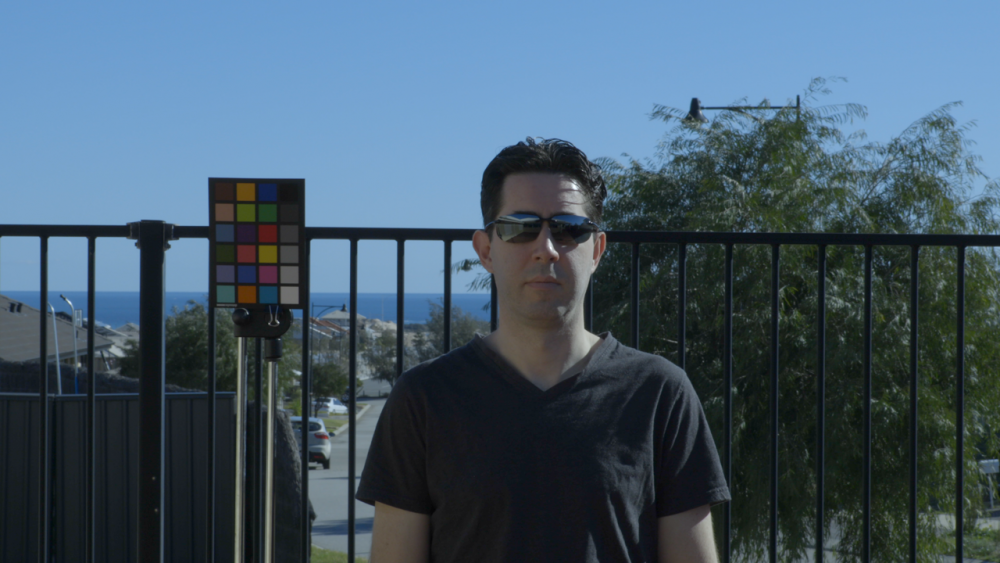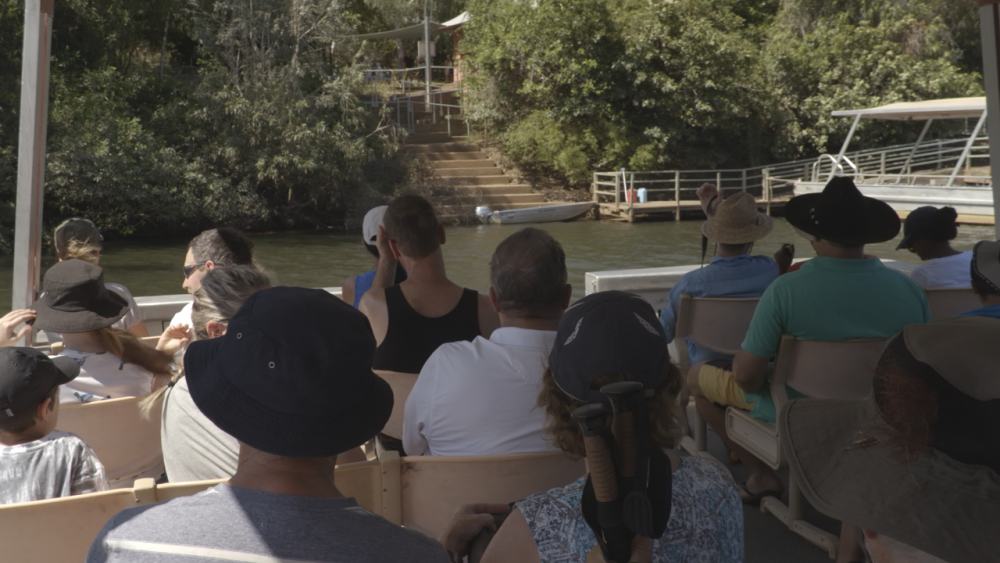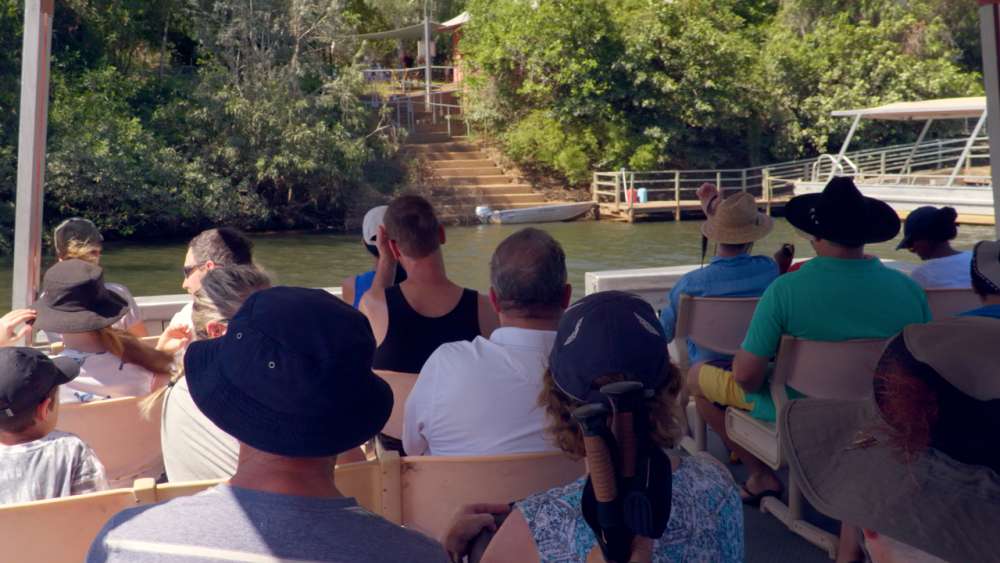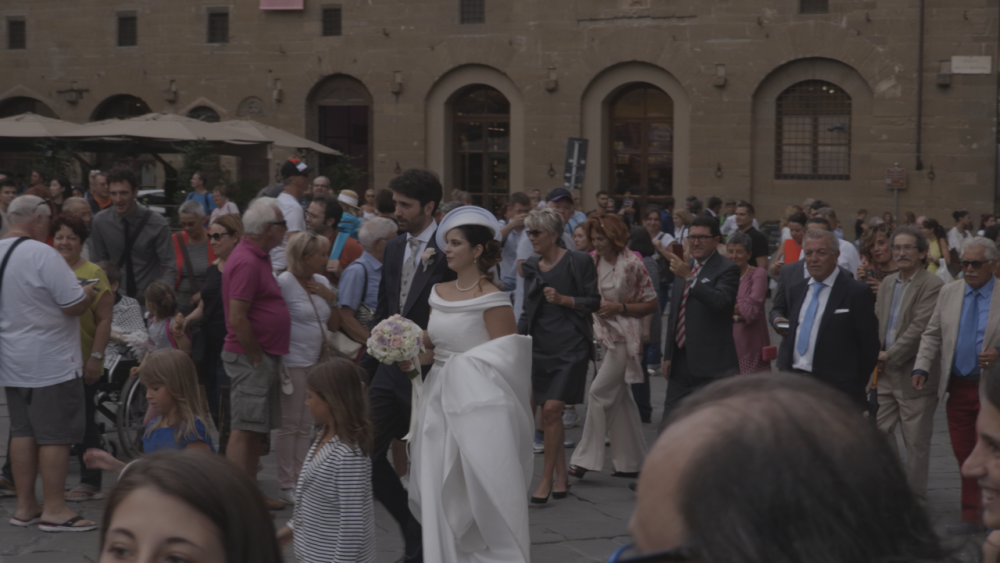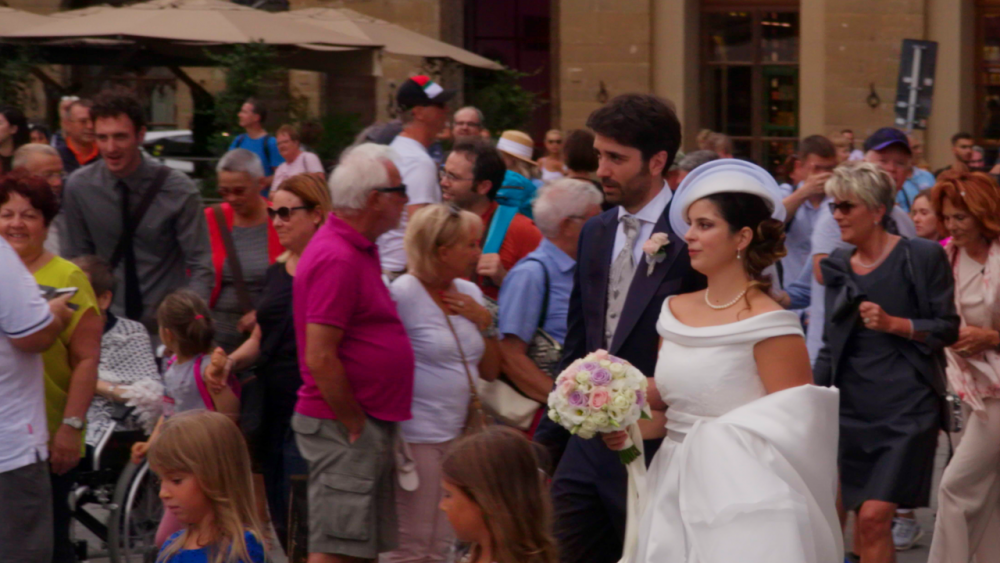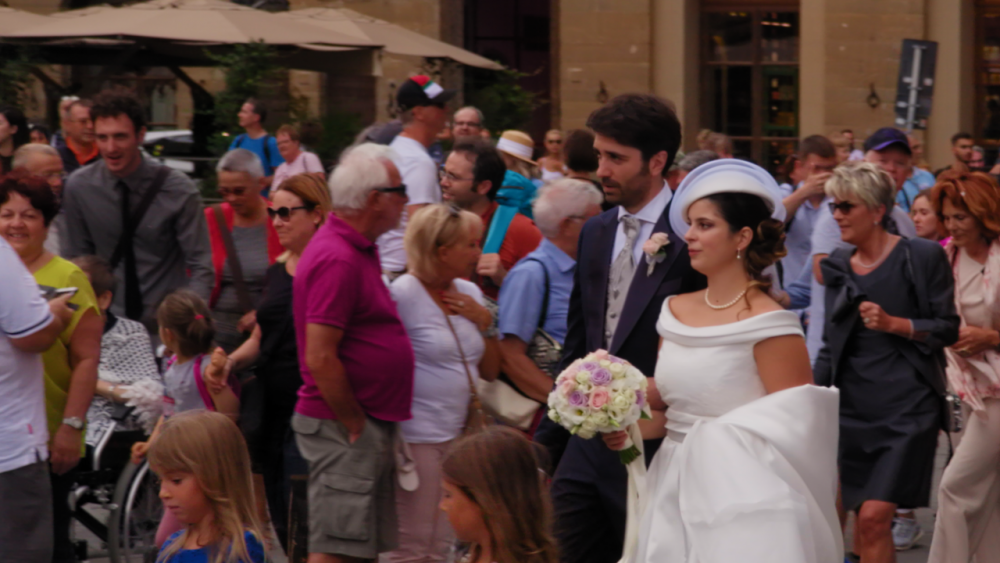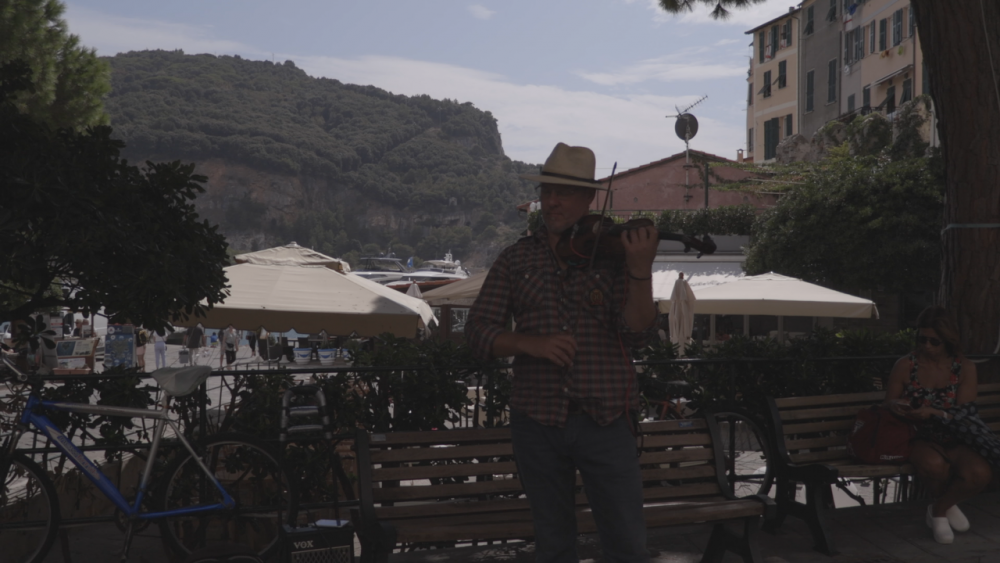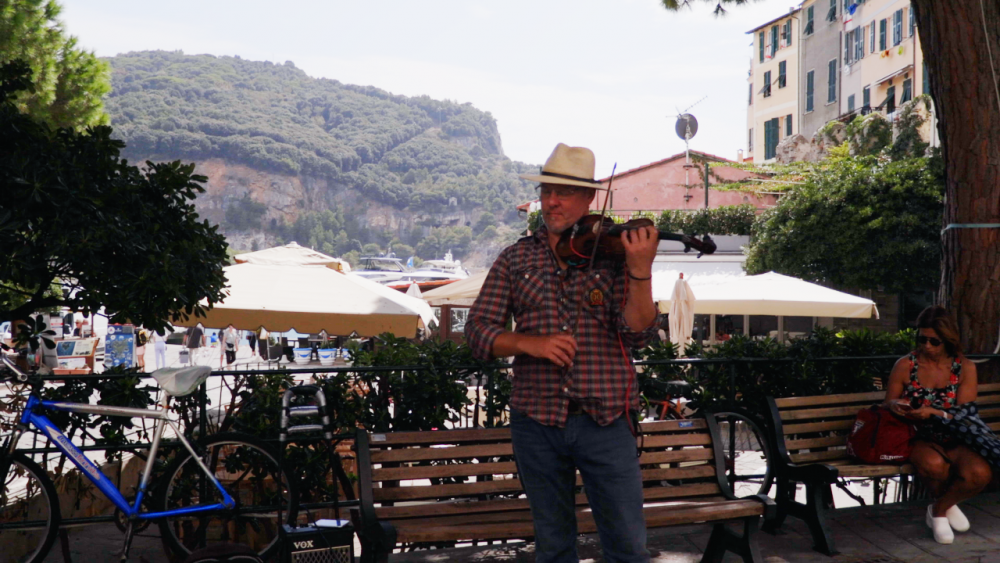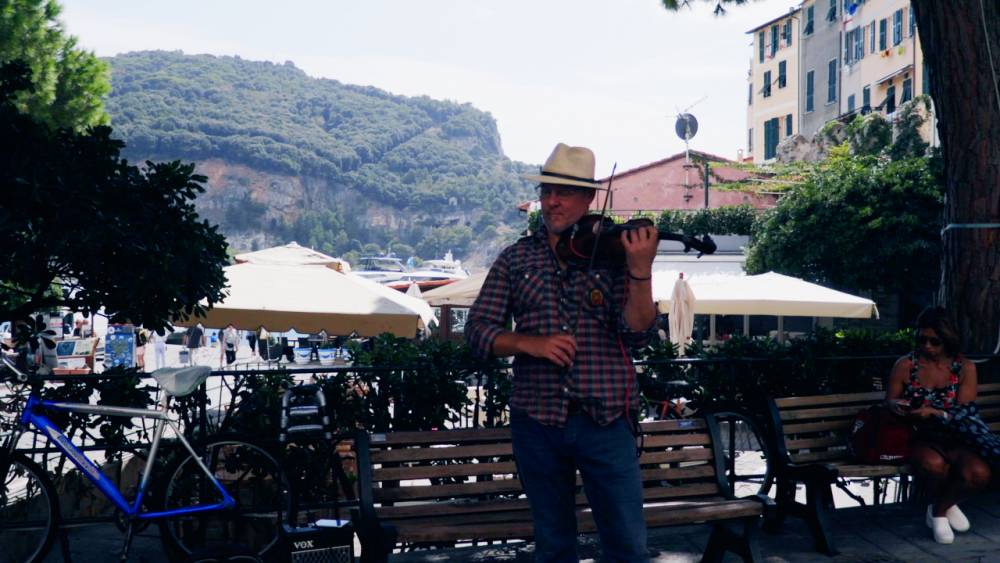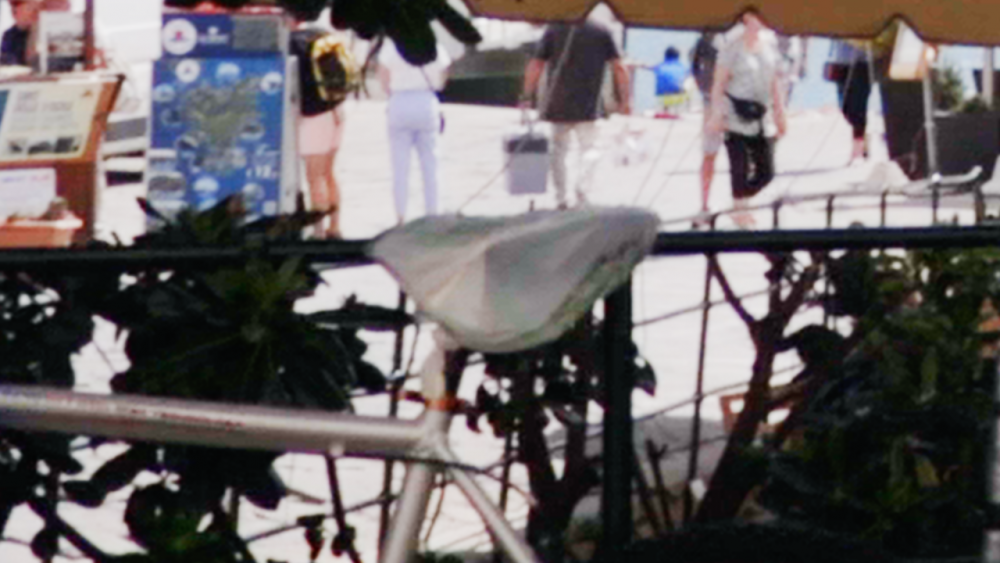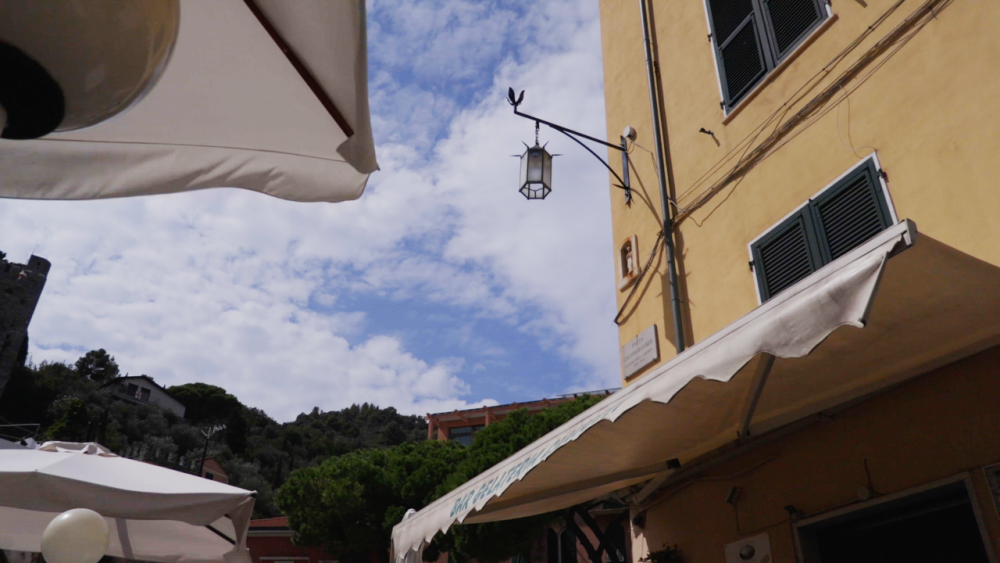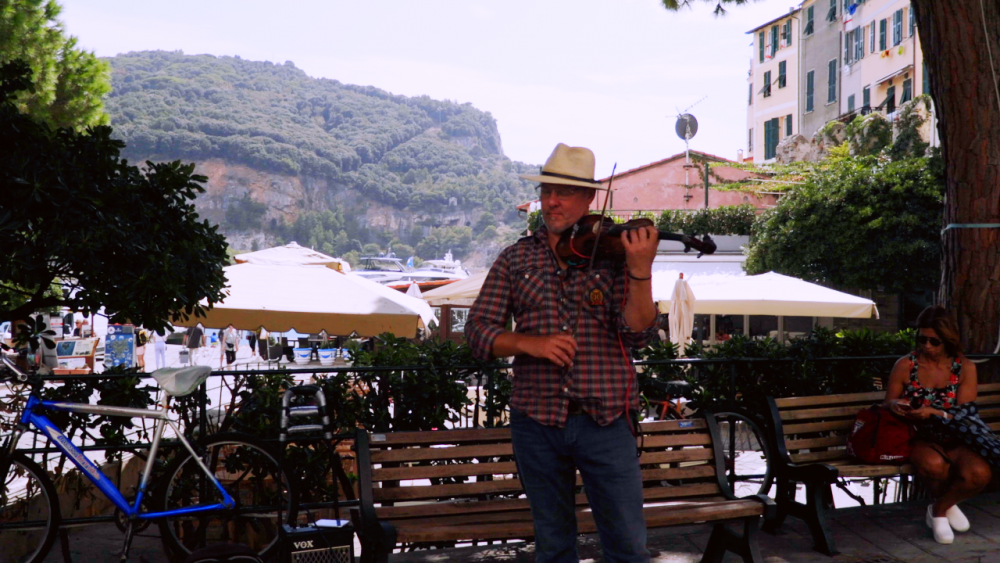-
Posts
8,028 -
Joined
-
Last visited
Content Type
Profiles
Forums
Articles
Everything posted by kye
-
In contrast, here's an equivalent shot from the GH5 with HLG and a basic WB, black and white point correction, and saturation adjustment: Obviously the gamma curve is different, and sat is a bit higher, but interesting comparison. I was looking at the vector plots of each, but nothing immediately useful stood out.
-
Ah! So it should have been angled so it was in full-sun? That's useful to know The highlight on my forehead was by far the brightest point of the image, as I took it. Considering it was a specular highlight it's likely to beat the chart, but clipping things like that is probably ok. Possibly most importantly is that that's all auto-exposure on the part of the XC10. Which is how I used to shoot with it, and how most of my footage looks. On an unrelated note, it's very strange taking the obviously over-saturated images from the CST and desaturating them, the only thing that seems to move is the colours in the colour chart, and almost everything else stays basically the same.
-
Mine above, for comparison. Thanks, yours is definitely better than mine. The guys hat in yours isn't nearly so artificially saturated, but in some ways yours is more saturated than mine, or at least equal. Interesting that your method, at least from your one-line description, is similar to the manual method on the test shots.
-
What about WB being wrong in camera and corrected in post? Custom WB from colour-checker with manual processing from above: Auto WB from XC10 with WB corrected in post (identical processing): Deliberately wrong WB from XC10 (I selected "overcast") with WB corrected in post (identical processing): We learn two things from this. The first is that it didn't choose the right WB, and the second is that WB in-camera matters as the second and third images both have cool-tinted shadows (look at the neighbours fence bottom left - it's neutral in the custom WB shot but not in the others).
-
Now I'm the proud owner of a colour checker, I can put some science into this madness, so today I filmed some test shots, with a handy tree in the shot to see what makes it radioactive and what doesn't. C-Log 4K 305Mbps shot: If we manually WB on the white square and apply a straight CST without luma or sat mapping we get this postcard from our nuclear fallout future: If we dial back the saturation after the CST to get something in the ballpark of this world, we get this: Not a bad image, and the tree looks pretty close to how it actually looks, although I'm tempted to say it's a bit blue. If we instead of all this we get Resolve to look at the colour checker and auto-magic us into perfection, we get this: Potentially a more lifelike rendition, but more due to the exposure rather than the colours. We get this if we abandon all forms of magic tools and just do it ourselves by setting WB, white and black points, then gamma, then a realistic amount of saturation: This potentially looks the most lifelike.
-
Another shot from a different trip. C-Log: With WB and CST applied: The colours just look strange to me. The trees on the far bank don't actually look like that, it looks like they're too yellow and the stairs also looks kind of artificially yellow, like I need to push the WB cooler, but looking at the temperature of the people in the shade they wouldn't want to go any cooler or risk looking very strange. The guys hat bottom left is very blue and even into the shadows. If I clean that up it looks better, but still odd. It's only when I put a node before everything else and reduce the contrast in it that things start to look semi-natural: but, now we're at this faded kind of look again, and it's not back to actually looking normal, it just looks less bad. I'm beginning to wonder if this is a mixed lighting issue or what it is. If it's mixed lighting that is caused by shooting where things are in shadow and in sun then that's pretty screwed up, as good luck shooting anything outdoors. Time for some tests.
-
What about a 4K shot then? The files are only 8-bit, but the XC10 scored a lot of press from its 305Mpbs 4K. Here's a 4K shot in (hopefully) much better lighting. Its of a wedding procession that randomly came through a square in the middle of Florence, complete with full band in front and people throwing confetti etc. The C-Log: One of the reasons to shoot 4K is to be able to reframe in post, and considering that 4K is basically 4 1080p frames, even if I zoomed to 200% I should still be looking at a 1080p frame with 76Mbps, which is much better than the 35Mbps(?) of the 1080p25. So, let's apply a WB, CST, and some contrast and saturation, to get this: Despite using luminance mapping and saturation mapping on the CST, we have colours that the 80s would be proud of. Getting a bit smarter we can qualify the more saturated areas and pull them back a bit. There is also some noise in the brides arm and the grooms jacket, so we can apply some temporal NR (another free feature in Resolve). We get this: Not bad I guess, although more work on the extreme colours would probably pay off.
-
I've owned the XC10 for a few years, shot a few family travel videos with it, loved using it but always struggled with the footage it gave me, and have moved on with other cameras since which haven't given me the challenges with the footage that the XC10 gave me. I have made attempts to edit the footage from it but got bad colour, gotten discouraged, and given up. I'm now back to editing the footage and am determined to prevail. This thread is my attempt to make sense of WTF is going on with XC10 C-Log footage, overcome it, and move on. This is going to be long and complicated, so settle in and grab a drink, or go do something else (probably much more useful) with your day. It's not a review of the XC10, although in a sense it will go some ways to review the footage I've gotten out of it. The context is that I shot on full-auto with this camera in available-light situations, with no control over what I shoot. Probably most importantly is that I shoot auto-WB. I do this for lots of reasons and even if I'm wrong for doing it, it's done, it's baked into the footage I have here, so not much I can do about that now. The first phase of owning the camera was using it, not getting the results I wanted (in terms of colour), and thinking I didn't know enough about colour grading. I didn't think that grading C-Log should be so difficult, considering that Canon is known for having great colour (as opposed to early Sony cameras where many people struggled in post) but I couldn't work it out. The second phase was when I'd learned more about colour grading and I still couldn't get the results I wanted. I was trying to grade a short video of a day-trip I took on a holiday in Italy and just couldn't get good colours. At the time I ended up just releasing it (which means uploading it unlisted and sending it to friends and family) despite not being happy with it. Here's the video I posted at the time: A nice little vignette of a tiny village in Italy, shot in a couple of hours one afternoon, but oh boy did I struggle to make this video. Despite the colours being pretty awful, this was the result of days of work. DAYS. After posting it I kept trying to do better. I reached out to the colourist forums and their advice was to try for punchier contrast and more saturation, which I tried, but it always looked awful. By far the worst shot was the one of the violinist, which was recorded in the XC10s 1080p50 mode, in mixed lighting. Here is that shot in C-Log: So, you apply a Colour Space Transform and get this: It looks somehow like it's dull, but also too saturated and too contrasty, both at the same time. and like there's a coloured sheen all over everything. So, you apply some manual white balance before the CST, and play with a bit of adjustment after the CST to try and liven it up a bit: and here we have the guys skin tones looking way too saturated (he looked perfectly normal in real-life), and it still looks drab and too saturated at the same time. So, you abandon the CST wondering if there's something strange in it and go full-manual, applying WB, contrast, and saturation. Which gets you back to roughly the same place. Its an image of contradiction. His shirt and jeans are dull, but his skin colours are too saturated. The wooden bench in the background looks fine (which is telling - wood is very sensitive to grading), but the bike and the flowers in the ladies dress are practically radioactive. The blue on the bike might be a colour science trick to emphasise blue skies and maybe isn't meant to be realistic, plus we can scale it back with a Hue vs Sat or a local adjustment, but the flowers on the dress are practically skin coloured, so they can't be a deliberate special effect built into the colour science, lest everyone from earth seem like plasticine lifeforms. So, we look deeper, trying to understand what's going on. I've seen images like this since, and it normally means you're stuffing up the WB. The ladies shoes seem like a good reference point, looking like they were made to be white and also that they'd be well cared for and probably a reliable reference point. So, we use them as a WB point and we get this: A complete success in the sense that her shoes are now white and more stylish than ever, and a complete failure in the sense that the rest of the image is obviously completely screwed. If we were paying close attention (and I can do this because I zoomed in very closely to her shoes) we'll note that they weren't all one colour - by making them white the parts of her shoes that were darker and in shadows became very blue, just like the whole rest of the image. We can also look for other clues, like the cover on the bicycle seat. Here is a close-up from the previous grade where we adjusted everything manually: Now we starting to understand what we're dealing with. For a start, we have horrific macro-blocking. This is what happens when you don't listen to the advice of your elders when they say that 8-bit Log is a bad idea, and just to throw caution to the wind, you also filmed with a horrifically low-bitrate codec, in slow-motion, in mixed lighting conditions, with your subject in deep shadows. If I was a professional film-maker I would definitely be going to hell for this. As an amateur I might still have an uphill battle talking myself out of eternal damnation! So, placing my fate on the back-burner we turn back to the bicycle seat cover, if we assume that the green and blue/purple tint here aren't complete fiction (they're not as they're in all frames so aren't random noise in just this frame) then it shows we have some strange things going on. We have found strange green/purple issues going on, and also an un-explained warm-tint as well. At this point, I should confess I've been hiding something. This is another shot at the same location, showing the building that the violinist is facing, and we find the cause of why the light might be a little 'warm': Is that film-maker sin number 5? I should stop counting. So, we have to accept that the scene is un-naturally warm, but we still need to turn out attention to the green/purple issues. By playing with the colours in the Shadows and Highlights wheels we can clean it up a little: It's better, but still just, wrong. Look at the colours in the windows of the building top-right of frame. Look at the CA on the satellite dish. Look at the macro-blocking on the skin of the violinist or the lady sitting. While trying to grade this and I learned not to use the 1080 modes, especially the 50p, at least for how I shoot (difficult available lighting and in log profile). I did some testing, applying the Optical Flow to slow the 4K25p down to 50% speed (as if I'd filmed 50p and conformed to 25p) vs the native 50p and decided that the Optical Flow created a better result than the 50p. So, never use the 1080 modes again. This will do it for part one. I can only attach so many images, and only embarrass myself so much in a single post!
-
Cool video and solid technique. The biggest thing I have taken away from the professional colourists is that they have have mastered the basics, and most of the time they don't do anything fancy and don't have to. They typically only have to get fancy when there were issues with how something was shot and they have to correct problems, so that completely lines up with that video, where the DP does basics to check they haven't stuffed things up.
-
Levi Allen just posted a great video on his entire workflow using 360 video, but he also goes into his philosophy for using 360 footage in a 'cinematic' edit and talks about things like shot variety, cutting it up with different cameras to provide context, and other artistic choices. His overall approach was to use it as a camera that can get shots you couldn't get otherwise, but beyond that to just frame up a shot and stick with it, so the fact it's a 360 camera is kind of not that obvious, because it becomes a gimmick if you use it too much or make it too obvious.
-
Cool discussion so far, and a few notes from me: like @PannySVHS says - first one so who cares! Congrats for getting the gig, shooting it, getting an edit together and publishing. It takes more guts than people think to actually get things done and get them out into the world than people think, so total respect for that. I'm completely out of touch with what is in style these days (actually, who am I kidding, I was never in touch with it lol) but I can say I definitely enjoyed it, the song was great and your video seemed to match. What I mean by that is that you had a concept (daydream), you had a style (kind of retro vibe), you made framing and editing decisions, and the band made a bunch of decisions when writing the song, and for me they all matched. As someone who has learned a lot by just shooting many projects, I can give some thoughts on how to get better and develop your style.. which is to work out what worked well and what could be improved next time, and the three sources of that information should be the client, the target audience, and you. I'd suggest that you concentrate on only one or two major things to improve before your next project. Obviously little things can be addressed, but if you focus on too many things then firstly you're not focussing, and secondly you'll get depressed about how many things could be improved and you're less likely to do another one. So pick a few things that worked really well, and one or two things to work on, and actively try to include them in your next one. My last thought is just to say that you should do as many projects as you can. There are a bunch of things that we only learn by doing over and over and after a while certain patterns will reveal themselves and we'll understand that something we do in prep has a certain impact in post. Great stuff!!
-
Every now and then I stumble upon something that it useful from a film / cinema / video / technique education perspective. Maybe you do too. Let's share them here. To start, here's a course I've just started watching, it's an MIT film and cinema history course, which (so far) appears to be the videotaped lectures. The presenter is very passionate and lectures seem to be quite engaging. https://ocw.mit.edu/courses/literature/21l-011-the-film-experience-fall-2013/index.htm
-

The New Panasonic G100 “vlogging” Camera to launch June 24th
kye replied to Video Hummus's topic in Cameras
Don't you find a 24 too narrow? When vloggers worked out that the 16-35 was the right lens then I think vlogs got a lot more comfortable. I found that a 24mm without using a long extender felt like having a casual conversation when the first phrase should be "dude, why so close?" Affiliate of course! On another note, I think that action cameras aren't taken as seriously as they should be taken for vlogging. They normally have a wider mode, now with linear lens corrections. Can have IBIS, detachable screens, mic inputs, and fixed focus (or at least small sensors that have large depth of field). -
Tom posted a follow-up to the above, with the results, and also the under/over exposure tests. I did it blind and picked the P6K first, with the UMP second. Interestingly, I chose based upon the colours, and the strange green tint from the Alexa and the awful strange everything colours of the RED made them get third and last places, respectively. The more I grade, the more I care about good colour and the associated art department choices (which obviously aren't a factor here) and less about the resolution or whatever else of the camera. The sharpness of the P6K doesn't phase me as I know I could soften it in post, or on set with lenses and filters. Considering that the Alexa has been used by other people to get good colours once or twice before we know it's possible and the camera isn't fundamentally flawed... yes, I'm kidding of course. I don't even think he botched the WB. It's very odd how the colours were rendered, and strange that the RED also shared some of the bad colours from the Alexa. Regardless, seems the image from the P6K holds up pretty well, and the over exposure highlight rolloff didn't look too much worse than the Alexa, of course with the under-exposure shadows being much superior due to lower noise levels.
-

Z-CAM quietly announce 8k and 6k FULL FRAME cameras - no joke!
kye replied to Oliver Daniel's topic in Cameras
This recent video is interesting as the guy uses a ZCam and talks about how things like the 4k120 (or 4k100?) is great as it is slow motion but also allows a bit of digital reframing. I've also noticed a few people who seem to be shooting the same combo of ZCAM with the Vazen 40mm 1.8X T2 anamorphic. The guy in this video says they call it the "baby RED". For the money, this combo (or with the Vazen 28mm T2 1.8X anamorphic), with a Vmount / monitor / matte box, seems like the real deal. -
Ignorance is bliss.. stop reading the internet and just go shoot! and yes, crop gets rid of some of the character, but not all of it - things like lens coatings apply equally across the whole frame. I would suggest that lens coatings and the sharpness and contrast of the lens are more sought-after properties of vintage lenses than what is happening on the edges of frame, the Helios 44 being an exception of course. Don't let my past failures prevent you from pursuing your own failures... I read somewhere online that bad decisions make for good stories. Presumably that you can tell other people online
-
That was my experience of the local festival circuit that I saw. One doc I saw was very entertaining and I don't begrudge it winning a few awards, but when it won Best Cinematography is was beyond surprising as not only was it badly shot and lit, there was even a moment when someone bumped the camera and you could clearly hear them say "oh sh*t". The panel was a bunch of industry people and successful indy film makers.
-
GH6 / GH6S perhaps? It would make sense for Panasonic to push people into their new mount, and as long as there are adapters available then the people with vintage glass won't complain.
-
I did a test of digitally reframing in post, comparing a 4K shot at 100% and a 4K shot digitally-zoomed at 148% (to match framing). The purpose of the test was to compare taking a 4K crop of 6K with simply filming 4K and digitally-cropping in the same amount. My impression was that it's pretty darn difficult to tell the difference once it's been compressed, but it was also pretty difficult to tell the difference looking at the files straight out of camera. You could tell that the upscale was a bit blurred but most lenses are also a bit blurred and codecs a bit blurred too, so in a practical sense I think you're fine. Using Clearimage zoom is also better than the test above as it is pre-compression, whereas the above is post-compression and is throwing away bitrate.
-
I edit in Resolve and am starting to out-grow my home-grown approaches. For example, I'm currently editing a project that has 37 scenes and (currently) 1500 clips. I'm at the start of my edit process and will cut this down severely, but am finding things un-wieldy. I'd google tips from documentary-makers on how they handle absolutely huge volumes of clips, but it seems that no-one is editing large projects in Resolve (and is admitting it online) so the advice typically revolves around PP or FCPX which have different editing features.
-
Or the GH5 using the ETC mode in 1080 gives a 1:1 crop, which I think is something like 2.8x crop of the 2x MFT crop, making it a crop factor of 5.6 and making the 210mm + 2xTC something like 2350mm! Of course, focal lengths this long are basically unusable because any source of movement, even a slight breeze or people walking, will blur the image. That thing is pretty cool. The wheels make sense in how it would allow weight onto a moving part, unfortunately the FD 70-210 is one of those push/pull to zoom lenses (pump action lenses? if they're not called that they totally should be!). It's less of a problem really, as the lens is MF I'm kind of taking some of the weight of the lens while holding it anyway. I use a monopod with it, but that's more for stability during shooting. I'll see how I go. It's been so long since the young fella played last season that I've forgotten what's what!
-
I haven't, although I haven't used it as much as I had anticipated. Even when I put that on my GH5 for sports, which is a setup I actually use in real-life, I get a little concerned about weight on the mount. I've wondered about retrofitting some kind of lens mount onto the zoom, unfortunately there isn't room on the lens for anything to be strapped around it as it would obscure the control rings. I could put something around the TC though - it's just a cylinder on the outside, although I don't always use the TC, so it wouldn't always suit. 1200mm is quite useful though, recording sunsets where the sun is huge in frame is a good example of that kind of focal length.
-
And here is my entry for most ridiculous Micro rig, the competition that no-one asked for and no-one will find useful. Micro, FD-MFT adapter, Canon 2x TC, Canon FD 70-210 f4. Might be one of the cheapest ways to get 1210mm 60p RAW that exists. Beyond that, not so useful!
-
Great stuff... and of course, mixing alcohol and explosives is always a great idea!!!* *No, it's not.
-
Cool product. It would be good if the dual-mono mode just using the front mic could also be used where one of the channels attenuated so it was a safety track, but I guess for the average user it makes sense this way so it's plug and play for fast delivery. It certainly fixes a number of issues with existing offerings. Also, @Dave Maze is hilarious! Nice work on the review


